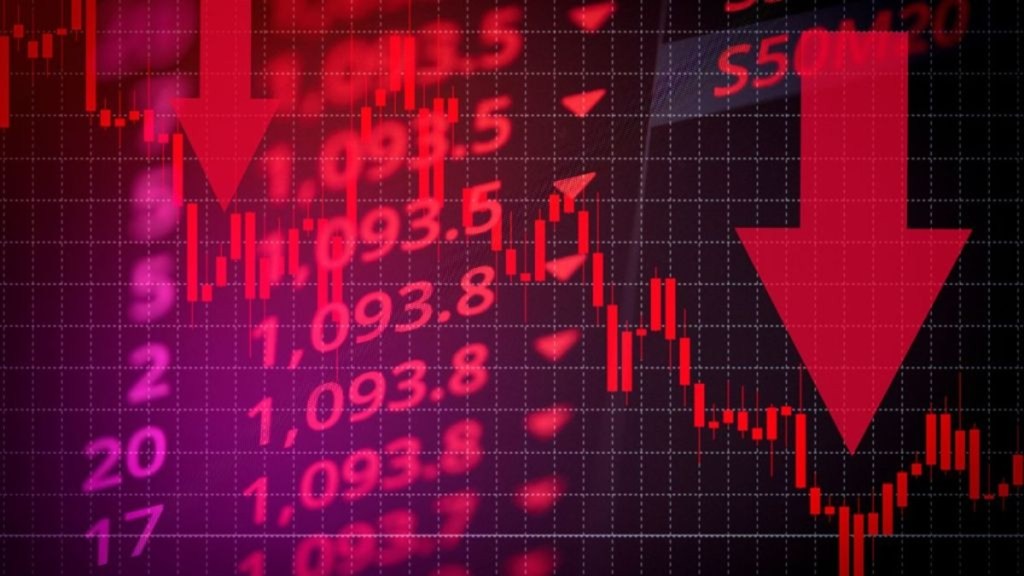S&P 500 is on the verge of a bear market when trading begins today. S&P 500 has fallen 17.4% since setting an all-time high on February 19, and it is set to open Monday in bear market territory. The 20% fall from the S&P 500’s peak is a significant warning for investors and the overall economy.
S&P 500 is currently at 5,074.08 and is expected to trade at 4,784.84 by the end of this quarter and at 4,434.93 in one year, according to Trading Economics.
US markets are experiencing their worst losses in five years due to the Trump administration’s steep tariffs. Fears of a global trade war, rising inflation, and a potential recession have led to the market selloff.
The market meltdown may not stop on Monday. US stock futures on Monday, April 7 are again down significantly after two sessions of sell-offs on April 3 and 4 erased over $5.4 trillion in market value. Dow futures is down over 1,313 points while Nasdaq futures lost 4.6% and S&P 500 futures declined 3.7%.
Markets have rejected President Trump’s massive tariff regime, which began early Saturday morning and is set to launch even larger tariffs on Wednesday morning.
But, where is the US market headed?
The answer, this time, might not be blowing in the wind, because a lot will rely on how the initial cause of the carnage evolves.
The market meltdown could stop if some positive negotiations happen between the US and its trading partners. The President has ordered stronger retaliatory tariffs for 60 countries labeled as “worst offenders” starting April 9. Trump’s new tariff regime slaps 20%, 54%, 26%, and 24% duties on the European Union, China, India, and Japan, respectively.
Trump stated that cars manufactured in other countries will be subject to a 25% tariff. How Trump’s new tariff structure impacts global trade remains to be seen.
China’s response to the tariff threat, indicating plans to retaliate, has further sparked market concerns over strained global trade.
“It appears that the coming days may bring even worse consequences for US and global stocks, regardless of how favorable the upcoming data is, given fears of further escalation of this war. What may remain is hope that Trump will recognize the extent of the damage that his protectionist policy could cause and will soften his hard-line tone, potentially paving the way for a deal on balanced terms,” says Samer Hasn, Senior Market Analyst at XS.com
Also Read: US consumers to bear the brunt of Trump’s tariffs
US Recession
Wall Street is panicking as recessionary talks emerge. The tariffs would raise American taxes by $660 billion a year, according to JPMorgan analysts. The Consumer Price Index, a gauge of US inflation that has had difficulty returning to normal in recent years, will rise by 2% as a result of the price increase.
Trump’s proposed massive tariffs could potentially lead to a global economic recession in 2025 if his trade policies continue. JPMorgan analysts increased the risk of a recession to 60%, while Goldman Sachs increased its probability to 35% in the next 12 months.
US Fed and Markets
How the US Fed responds to developing economic concerns will also be closely watched. Fed Chairman Powell has stated unequivocally that only if the incoming data meets their expectations will they cut interest rates. On tariffs, Powell said that they will push inflation higher and slow down growth.
Tariffs are inflationary in nature, and when they are introduced, it is unlikely that inflation will fall. Powell may therefore have to postpone the rate reduction. However, a possible US recession is on the horizon, and Powell may have to reconsider his strategy to cushion the economy.
Tariffs and Consumers
The independent Tax Foundation estimates that the average American household will spend $2,100 extra per year on goods as a result of the large universal and reciprocal tariffs announced by Trump. According to the Tax Foundation, Americans’ after-tax incomes will fall by an average of 2.1% this year.
Closing Bell
Trump is set to hold a press conference with Israeli Prime Minister Benjamin Netanyahu on Monday afternoon, following a meeting involving tariff discussions. Trump’s positive statement could potentially help the market recover from losses and end Monday on a positive note. Currently, the chances are bleak.

